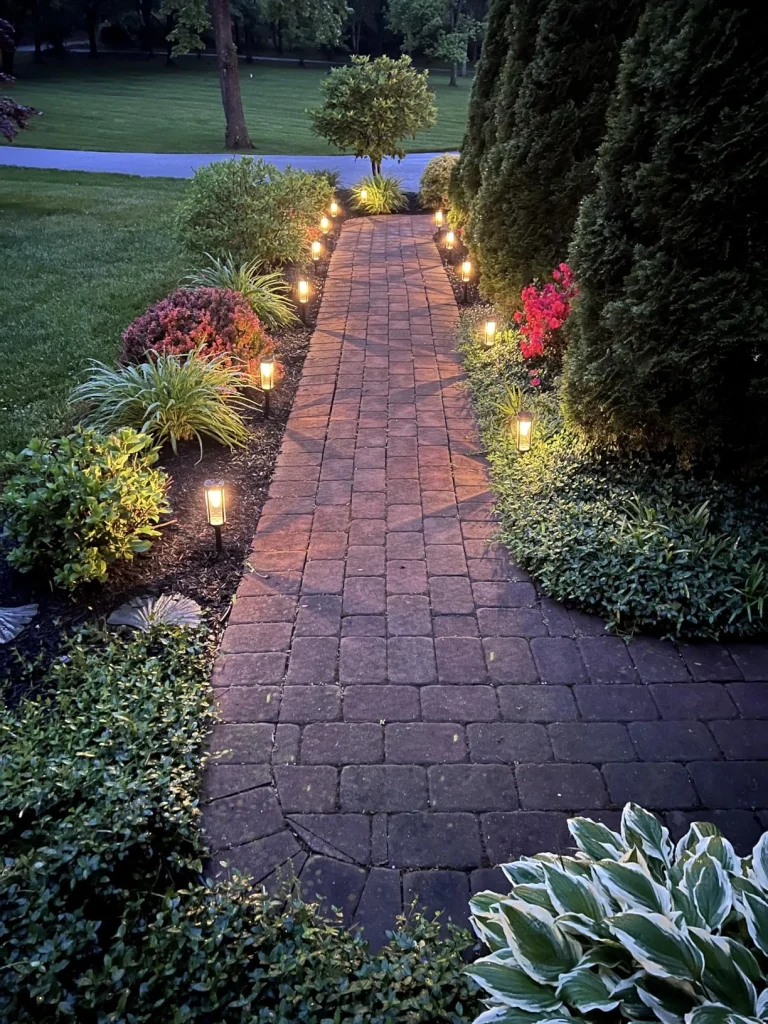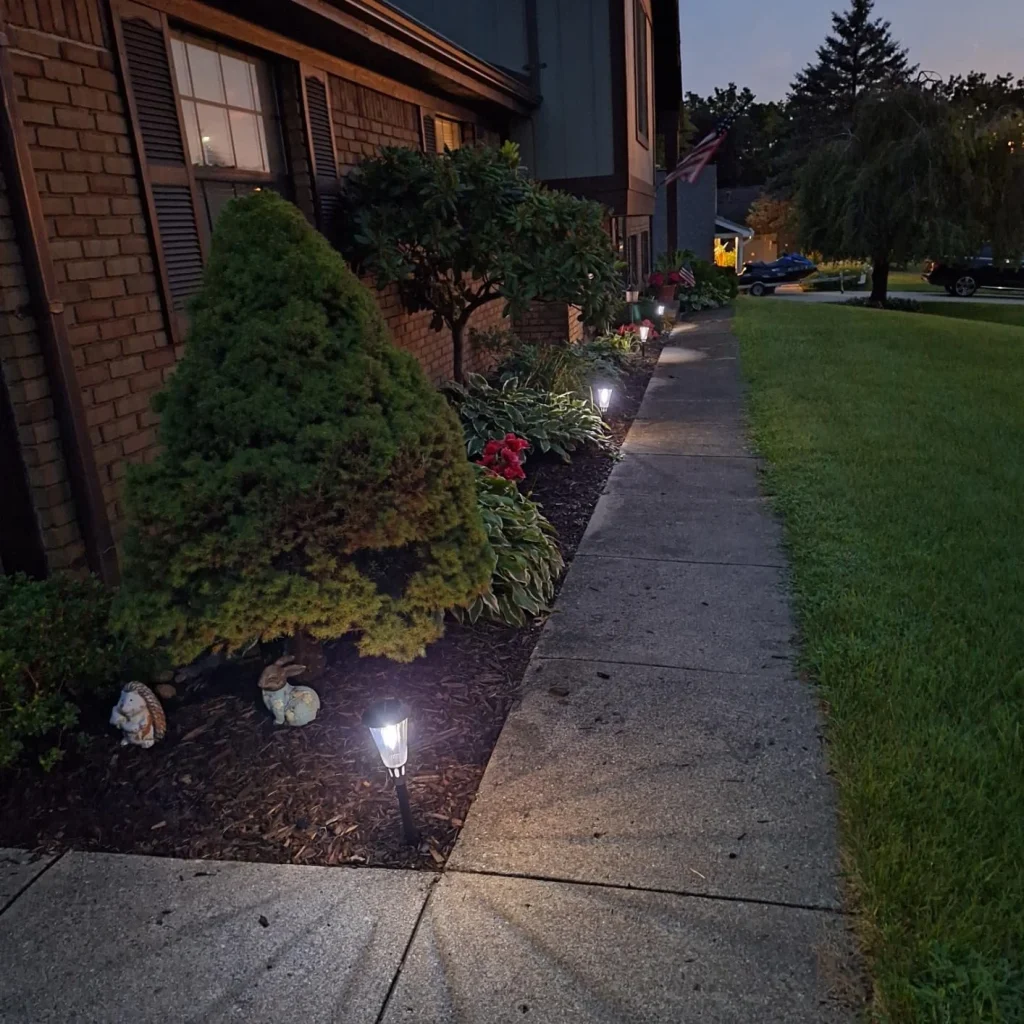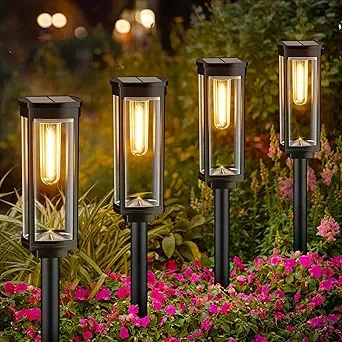Stumbling over garden paths at night, struggling to showcase your backyard’s beauty, or dealing with costly wiring for outdoor lights—these common landscaping challenges can be elegantly solved with landscape lighting solar powered. These eco-friendly, wire-free lights enhance safety and aesthetics while harnessing solar energy, eliminating the need for complex electrical setups. However, choosing and maintaining the right lights can be tricky without the right know-how. This guide dives into the core benefits of landscape lighting solar powered, offering practical tips on light effects, installation, energy optimization, and maintenance to create a stunning, sustainable outdoor oasis.

Overcoming Landscaping Lighting Challenges
Solving Wiring Limitations and Ambiance Endurance
Traditional outdoor lighting often requires extensive wiring, which can disrupt garden layouts and inflate installation costs. Landscape lighting solar powered offers a game-changing solution by relying solely on sunlight to power built-in batteries, delivering illumination without digging trenches or running cables. A homeowner in a suburban neighborhood transformed their sprawling backyard with solar-powered lights, avoiding the hassle of wiring through dense shrubbery. This wire-free approach allows flexible placement in remote areas like garden beds or wooded corners.
Balancing ambiance with battery life is another hurdle. High-quality landscape lighting solar powered provides consistent glow for 8-12 hours after a day’s charge, ensuring your outdoor spaces stay inviting through the night. However, improper setup or low-quality models can lead to dimming or short runtimes, which this guide will help you avoid with targeted strategies.
Light Effects and Ambiance Optimization
Color Temperature: Matching Style to Setting
The color temperature of landscape lighting solar powered significantly impacts the mood of your outdoor space. Measured in Kelvin (K), warm white (2700-3000K) creates a cozy, inviting feel, ideal for intimate patios or garden seating areas. Cool white (4000-5000K) offers a modern, crisp look, perfect for highlighting architectural features or pathways. A homeowner in a coastal area used warm-white solar lights to accentuate a seaside garden, creating a welcoming glow for evening strolls.
Choose lights with adjustable color temperatures for versatility. Test different settings to find the best match for your landscape’s style—warm tones for lush greenery, cooler tones for stone or metal features. Checking user reviews for “true-to-color” performance ensures the lights deliver as promised.
Light Angle and Feature Enhancement
The beam angle of landscape lighting solar powered determines how light interacts with plants, sculptures, or water features. Narrow beams (15-30°) are ideal for spotlighting trees or statues, creating dramatic focal points. Wider beams (60-120°) work best for illuminating pathways or flowerbeds, providing even coverage. A gardener in a hilly region used narrow-beam solar spotlights to highlight a central oak tree, while wide-beam lights lined a winding path for safe navigation.
Experiment with light placement to ensure the beam complements the feature’s shape. For example, angle lights upward for tall plants or downward for ground cover to avoid harsh shadows. Adjustable mounts allow you to tweak angles for optimal effect.
Installation and Environmental Integration
Concealed Placement for Aesthetics and Efficiency
Strategic placement of landscape lighting solar powered ensures both beauty and functionality. Position lights in discreet locations, such as behind shrubs or under benches, to avoid visual clutter while maintaining clear illumination. Ensure solar panels are unobstructed by foliage or structures to maximize charging. A homeowner in a lakeside community hid solar lights within rock beds, blending them seamlessly with the landscape while lighting a pathway to the dock.
Test the light’s coverage at night to confirm it illuminates the intended area without glare. Use stakes or clips to secure lights in loose soil or along fences, keeping them stable and visually appealing.
Coordinating Solar Panels with Landscape Elements
The solar panel of landscape lighting solar powered must blend with your outdoor design while capturing ample sunlight. Mount panels on stakes or low-profile bases near plants or garden features to maintain aesthetics. In a wooded area, a homeowner integrated solar panels into a stone wall, ensuring they received sunlight while complementing the natural setting. Avoid placing panels under dense canopies or in shaded corners, as this can cut charging efficiency by 50%.
Adjustable or detachable panels offer flexibility for seasonal changes, such as shifting foliage in fall. Align panels to face the sun’s peak path (typically south in most regions) for maximum energy capture.

Runtime and Energy-Saving Strategies
Low-Power Modes for Extended Illumination
To balance brightness and battery life, landscape lighting solar powered often includes low-power modes. For ambient lighting, like outlining a patio, select a low-brightness setting (50-100 lumens) to extend runtime to 10-12 hours. For security or task lighting, such as illuminating a driveway, use a motion-activated high-brightness mode (300-500 lumens) that activates only when needed. A homeowner in a rural area set their garden lights to low mode for nightly ambiance, reserving high mode for guest arrivals, doubling the battery life.
Test different modes to match your usage patterns. Check battery capacity (2000mAh or higher) to ensure it supports extended low-power operation, especially for multi-night events.
Rainy-Day Runtime Reserves
In regions with frequent overcast skies, landscape lighting solar powered needs robust battery reserves to maintain performance. Look for lights with high-efficiency solar panels (20%+ conversion rate) and batteries that store enough energy for 3-5 nights of use after a single charge. A gardener in a rainy valley chose lights with 2500mAh batteries, ensuring consistent illumination through a week of cloudy weather.
Enable energy-saving modes during rainy seasons to stretch runtime. Some models include a “dusk-to-dawn” setting that dims lights gradually, preserving power while maintaining basic visibility.
Maintenance Tips for Long-Lasting Landscapes
Panel Cleaning and Plant Coexistence
Dirt, pollen, or sap on solar panels can reduce the charging efficiency of landscape lighting solar powered by up to 30%. Wipe panels weekly with a soft, dry cloth, or use a damp cloth for stubborn stains, especially after rain. In gardens with dense plants, check for overhanging leaves or vines that might shade the panel. A homeowner in a forested region trimmed back ferns to keep their solar panels clear, boosting charging performance during shorter autumn days.
Clean panels in the early morning or late afternoon to avoid hot surfaces. Prune nearby plants seasonally to prevent shading, ensuring your lights stay powered and your garden looks pristine.
Protecting Light Appearance Against Aging
Outdoor exposure can fade or crack low-quality landscape lighting solar powered fixtures. Choose lights with UV-resistant materials like polycarbonate or stainless steel to prevent discoloration. Apply a UV-protectant spray annually to plastic components for added durability. A homeowner in a sunny coastal area maintained their lights’ sleek appearance by using UV spray, keeping them looking new after two years.
Inspect light housings for cracks or water ingress, especially after storms. For lights with exposed wiring, like string models, ensure connections are sealed to prevent corrosion. Regular care extends your lights’ lifespan by 2-3 years.
Conclusion
Landscape lighting solar powered transforms outdoor spaces with eco-friendly, wire-free illumination that enhances safety and beauty. By selecting the right color temperature and beam angle, you can create a captivating ambiance tailored to your garden or patio. Strategic installation and panel placement ensure seamless integration with your landscape, while energy-saving modes and rainy-day reserves keep lights glowing reliably. With simple maintenance like panel cleaning and UV protection, these lights will shine for years. Embrace the ease and sustainability of solar-powered lighting to make your outdoor spaces inviting, safe, and stunning, night after night.


Leave a Reply